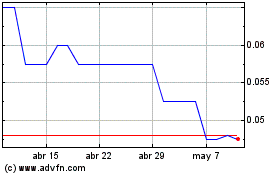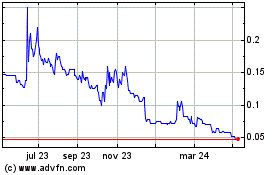TIDMRRR
RNS Number : 3782P
Red Rock Resources plc
18 October 2021
Red Rock Resources PLC
("Red Rock" or the "Company")
West African Gold Exploration
Key License Applications by Côte d'Ivoire Subsidiary
18 October 2021
Red Rock Resources Plc, the natural resource development company
with interests in gold, copper/cobalt, and other minerals,
announces that it has made applications for five exploration
permits through a wholly owned Côte d'Ivoire subsidiary LacGold
Resources SARLU ("LacGold").
Highlights
-- Five license areas totalling 1,907.07 square km were selected
based on a detailed and comprehensive screening and ranking of
possible target areas;
-- Inputs included all available historical and geological information for the country;
-- Each application area is located on a known regional shear
zones where gold mines are operating;
-- Each application area has significant artisanal mining occurring within and around it;
Red Rock Chairman Andrew Bell comments : "Exploration of some of
the largest parts of the West African Greenstone Belts, and
particularly the Côte d'Ivoire, has lagged far behind Ghana and
even Mali.
In partnership with M. Koffi Gbamele, a Côte d'Ivoire geologist
with 30 years of gold experience including at Newcrest and at
Taurus Gold, and with the invaluable assistance of our Côte
d'Ivoire-born geologist and data manager in London, M. Ali Barro,
Red Rock has returned to the country with fresh vigour and renewed
determination. M. Gbamele has engaged in exploration through its
different stages at well-known mines such as Bonikro, Dougbafla,
Hiré, and Afema, has conducted near mine development, and has in
addition substantial administration and community and Government
relations experience. We are excited by the opportunity to work
with him.
Following a detailed study, application has now been made for
five areas with, we believe, the pedigree and potential for
significant discoveries. The team's aim is to create and rapidly
list a quality West African stand-alone independently financed gold
play focussed on the Côte d'Ivoire ."
Further Information
Red Rock owns LacGold through a wholly owned UK subsidiary Lac
Minerals Ltd.
The key areas applied for are:
1. The Djekanou-Taabo project, located 148 Km North from
Abidjan. The project is 21 km Northeast of the Agbaou Gold mine and
20 km East of the Bonikro, Dougbafla and Hiré gold mines. The
Bonikro-Hiré projects sit on the Southern part of the Oumé-Fetékro
Granite Greenstone Belts. The Djekanou-Taabo project is located
between the Fetekro Greenstone Belt and the North-South Dimbokro
faults.
Intrusive host rocks at Hiré and Bonikro gold mines have been
dated at 2180+/- 6Ma and +/- 4Ma (U-Pb on Zircon), respectively.
These plutonic bodies acted as favourable sites for fluid flow due
to their brittle rheological characteristics.
The base formations of gneiss and volcano-sedimentary rocks were
intruded by tonalite-trondhjemite-granodiorite (TTG) type plutonic
rocks and undifferentiated granitoids. The Bonikro and Hiré gold
mines are a part of this granodiorite with NE shear zones similar
to the local NE shear zones seen at the Djekanou-Taabo project. The
project covers an area of 384.21Km(2).
Regional soil sampling (on a 800m x100m grid) carried out in
2005 by a previous company, showed regional geochemical anomalies
with:
-- 1Km long up to 12 parts per billion surface gold ("ppb");
-- 1.2Km long up to 12 ppb surface gold;
-- Peak values returned of 1236 ppb.
3.5 kms to the North of the project, an area has been defined as
a small-scale mining zone where intensive illegal and
semi-industrial gold mines are targeting quartz veins hosted in
diorite and granodiorite with a general strike of North-South.
2. The Yamoussoukro project is located 245 Km North of Abidjan,
covering an area of approximately 399.98 km2. The project is
roughly 10 kms Northwest of Yamoussoukro and parallel to the
Bandama river "Kossou Lake". The project is 12 kms Northeast of the
Yaouré gold mine and on the same Northeast trending shear zone. The
Yaouré gold deposit is hosted by Palaeoproterozoic Birimian
basaltic rocks with intrusions of granodiorite and lesser feldspar,
quartz-feldspar and hornblende porphyry dykes.
All the three main groups of Northwest structures delineated in
the Yaoure gold mine crosscut the Yamoussoukro project.
The Yaouré project area lies within the Eastern half of the
informally named Bouaflé Greenstone Belt in central Côte d'Ivoire.
The belt is a NNE-trending assemblage of Palaeoproterozoic
volcanic, sedimentary and intrusive rocks of the Birimian
Supergroup. Rock types in the Yaouré district are, for the most
part, mafic volcanic rocks with minor chert, turbiditic
metasedimentary rocks and a fluvio-deltaic formation. The
flysch-like turbiditic metasediments consist of sandstone to
argillite with graphitic and conglomerate horizons. The
fluvio-deltaic formation consists of sandstone, conglomerate, and
argillite. The volcano-sedimentary rocks were intruded by
tonalite-trondhjemite-granodiorite (TTG) type plutonic rocks and
undifferentiated granitoids. Mafic to ultramafic complexes are also
found in the Yaouré district.
Two gold occurrences and one alluvial gold occurrence are
located on the concession.
3. The Korhogo project is located 600Km from Abidjan, in the
North of the country. The project is 30km East of Korhogo town and
sits on the same NNE Shear zone as the Nako Gold deposits. The
permit application is between two sinistral shear zones with a NNE
strike and covering an area of approximately 399.46km2. The Western
area of the application reveals numerous gold occurrences.
Historical data around the application area shows regional
geochemical anomalies open towards the Korhogo project.
4. The Nassian Project ("Nassian") consists of one exploration
permit, covering an area of approximately 393.4km2. Nassian is in
the northeast of Côte d'Ivoire, located in the Southern border of
the Comoè National Park and approximately 475 km north of Abidjan.
The application is 3 km North of the city of Nassian.
Geologically, Nassian lies entirely within the
Tonalite-Trondhjemite-Granodiorite domain (TTG domain), between the
Boromo-Batie Greenstone Belt in Burkina Faso crosscutting the Bouna
and Bondoukou region, and the Tehini-Hounde Greenstone Belt to the
West composed of porphyritic granodiorites, biotite granodiorite,
and/or hornblende, metatrondhjenite, metatonalite, and
undifferentiated metagranodiorite. Amphibolite enclaves are
observed and also quartz veins, pegmatite veins and dolerite are
abundant in the area. The general orientation of the geological
formation is Northwest. All of these formations are crossed by
large faults oriented NNW and N-S. The application is located at
the southern extremities of the major faults on which Centamin made
large discoveries 140 km to the NNE at Doropo (3.5 Moz). The
geology consists of the same formation observed at Doropo Gold
Project.
5. The Tienko Project ("Tienko") consists of one exploration
application, covering an area of approximately 329.96 km2. Tienko
is located in the northwest of Côte d'Ivoire, at the Southern
border of the Republic of Mali and approximately 851 km North of
Abidjan. The application is 91 km North of the city of Odienné
where there is an airport.
The project is located between the Siekerole Shear Zone and the
Bannifin Shear Zone in Southern Mali and is a possible large splay
off the Bannifin Shear Zone. This application is 50Km from the
Marvel Gold deposit where 910 Koz have been discovered recently on
the Tabakorole Gold project. Major gold projects nearby are:
Yanfolila (1.8Moz), Kodieran (2.0Moz), Kalana (3.5 Moz). The
Tabokorole Shear Zone trends NW and joins the NE-trending Bannifini
major Shear Zone, the shear zone near which the Morila Gold Mine
sits (7.5 Moz). In the application area, regional sinistral
structures crosscut the paleoproterozoic formation
(flysch-sedimentary). The Tienko application lies in the western
part of the Tonalite-Trondhjemite-Granodiorite domain (TTG
domain).
FIGURE ONE
Map: application locations and the main gold deposits in Côte
d'Ivoire.
http://www.rns-pdf.londonstockexchange.com/rns/3782P_1-2021-10-18.pdf
This technical information in this announcement has been
compiled by the Company's geological adviser on Côte d'Ivoire, M.
Koffi Gbamele, a Member of the E-SGA, and has been reviewed by Mr
Joseph Komu, a member of AusIMM and a Manager employed by the Red
Rock group. Mr Komu is a member of a recognised professional
organisation and has sufficient relevant experience to qualify as a
qualified person as defined in the Guidance Note for Mining, Oil
and Gas Companies published by AIM.
This announcement contains inside information for the purposes
of Article 7 of the Market Abuse Regulation (EU) 596/2014 as it
forms part of UK domestic law by virtue of the European Union
(Withdrawal) Act 2018 ("MAR"), and is disclosed in accordance with
the Company's obligations under Article 17 of MAR.
Glossary
Amphibolite: rocks, including hornblende, comprised of amphibole
crystals formed from chain silicate tetrahedra.
Argillite: fine-grained sedimentary rocks.
Diorite: a coarse grained intrusive igneous rock, the product of slow cooling.
Fluvio-deltaic: the characteristic pattern of a fluvial plain
approaching a shoreline.
Flysch: a sequence of sedimentary rock layers that progress from
deep-water and turbidity flow deposits to shallow-water shales and
sandstones.
Gneiss: metamorphosed granite.
Granodiorite: a coarse-grained intrusive igneous rock intermediate between diorite and granite.
Hornblende: a group name for aluminous ultramafic rocks of generally dark appearance.
Mafic: magnesium or iron-rich igneous rocks containing some silicates.
Paleoproterozoic: the period 2.5-1.6 Ga, the first Era of the
Proterozoic Eon; period where the continents began to
stabilise.
Rheology: the science of the deformation of matter.
Sinistral: where the left side of a fault or shear moves towards the observer.
Tonalite-trondhjemite-granodiorite rocks or TTG rocks: intrusive
rocks with typical granitic composition (quartz and feldspar) but
containing only a small portion of potassium feldspar.
Turbidite: sedimentary rock composed of layered particles that
grade upward from coarser to finer sizes and so are thought to have
originated from ocean currents.
Ultramafic: metamorphosed mantle rocks with very low silica content.
For further information, please contact:
Andrew Bell 0207 747 9990 Chairman Red Rock Resources Plc
Roland Cornish/ Rosalind Hill Abrahams 0207 628 3396 NOMAD Beaumont Cornish Limited
Jason Robertson 0207 374 2212 Broker First Equity Limited
This information is provided by RNS, the news service of the
London Stock Exchange. RNS is approved by the Financial Conduct
Authority to act as a Primary Information Provider in the United
Kingdom. Terms and conditions relating to the use and distribution
of this information may apply. For further information, please
contact rns@lseg.com or visit www.rns.com.
RNS may use your IP address to confirm compliance with the terms
and conditions, to analyse how you engage with the information
contained in this communication, and to share such analysis on an
anonymised basis with others as part of our commercial services.
For further information about how RNS and the London Stock Exchange
use the personal data you provide us, please see our Privacy
Policy.
END
MSCGIBDGBSBDGBI
(END) Dow Jones Newswires
October 18, 2021 04:44 ET (08:44 GMT)
Red Rock Resources (LSE:RRR)
Gráfica de Acción Histórica
De Mar 2024 a Abr 2024

Red Rock Resources (LSE:RRR)
Gráfica de Acción Histórica
De Abr 2023 a Abr 2024
